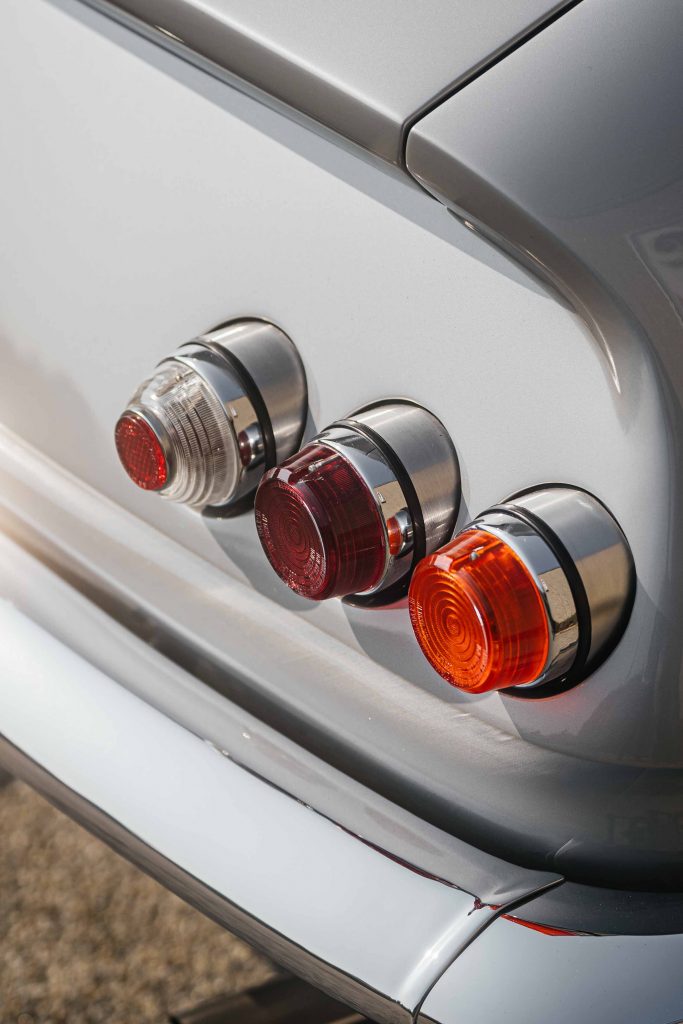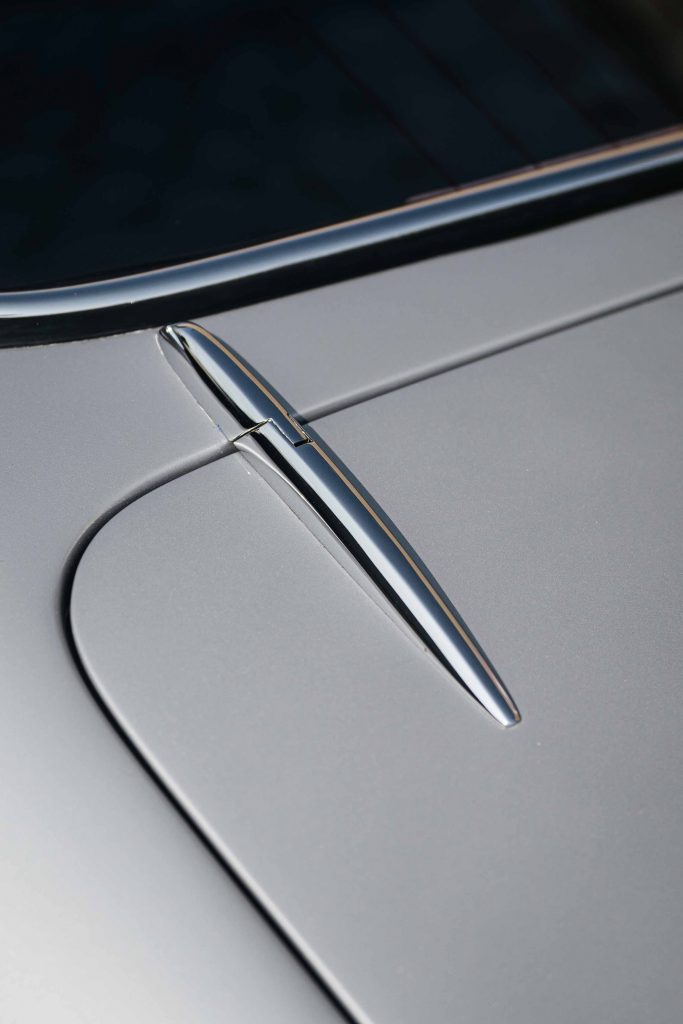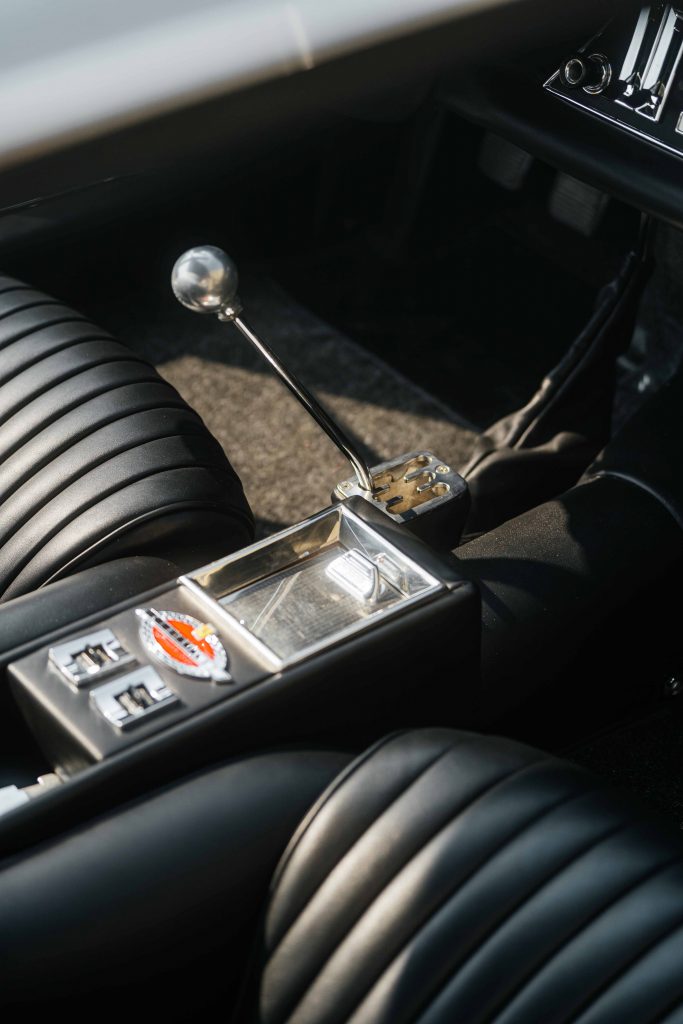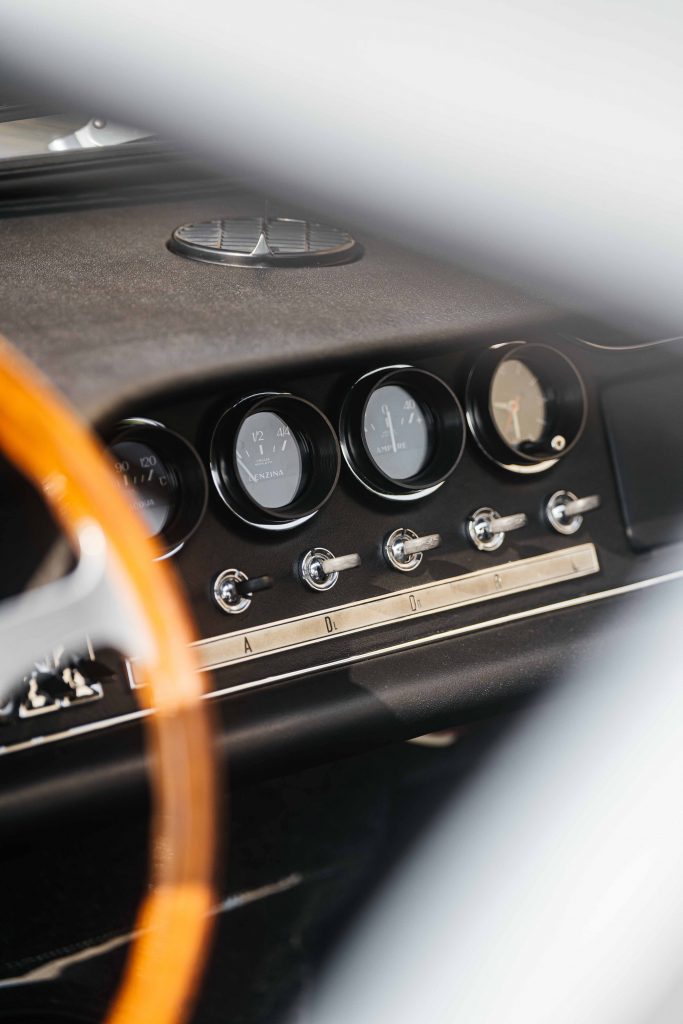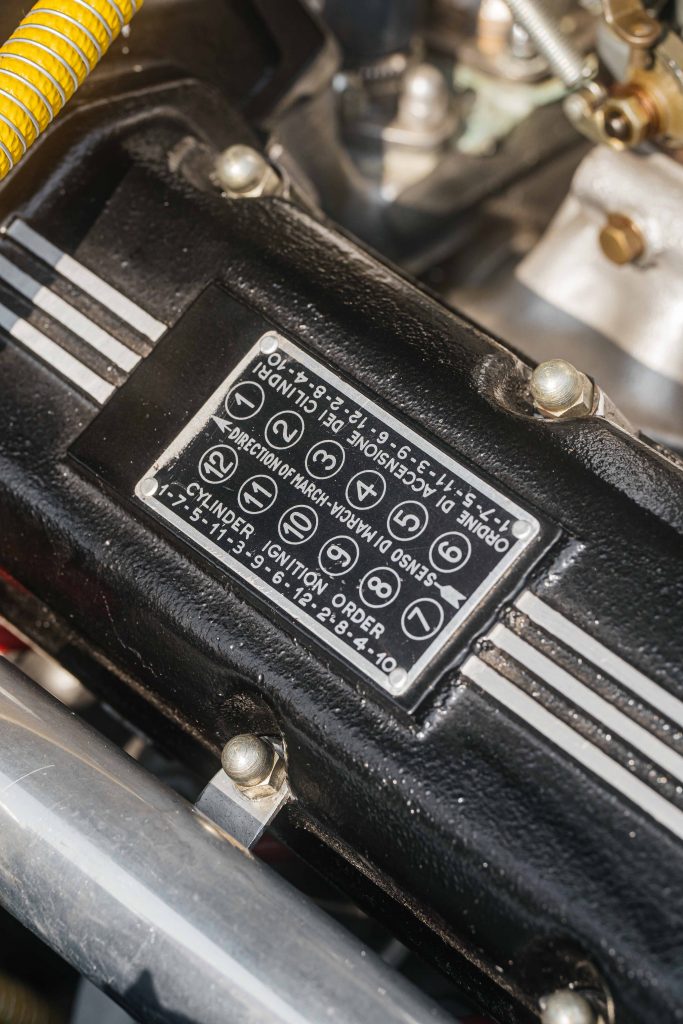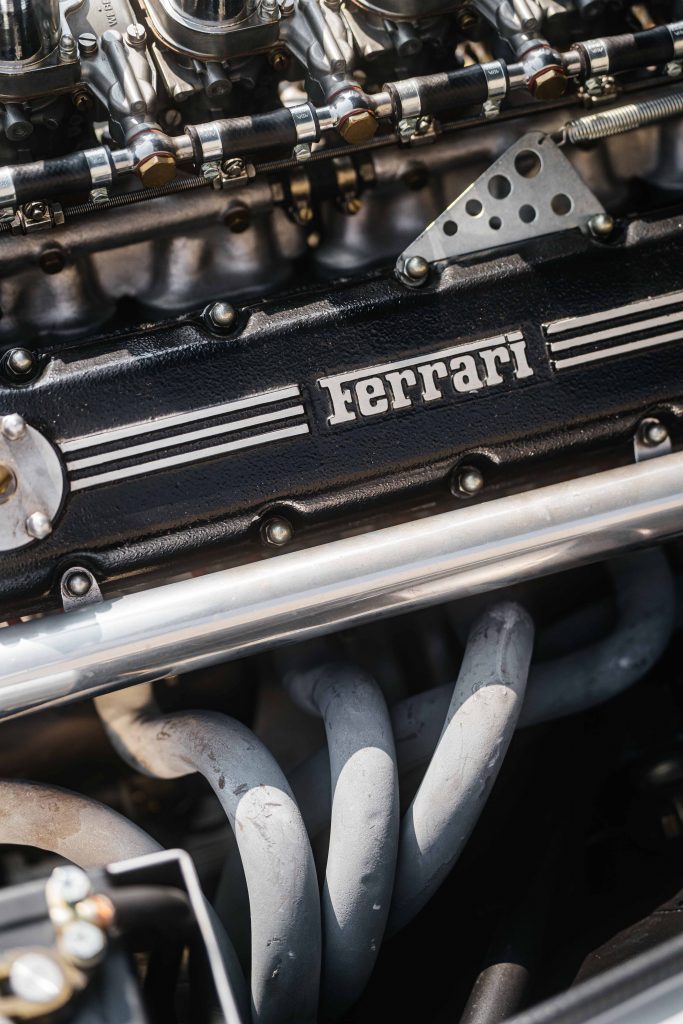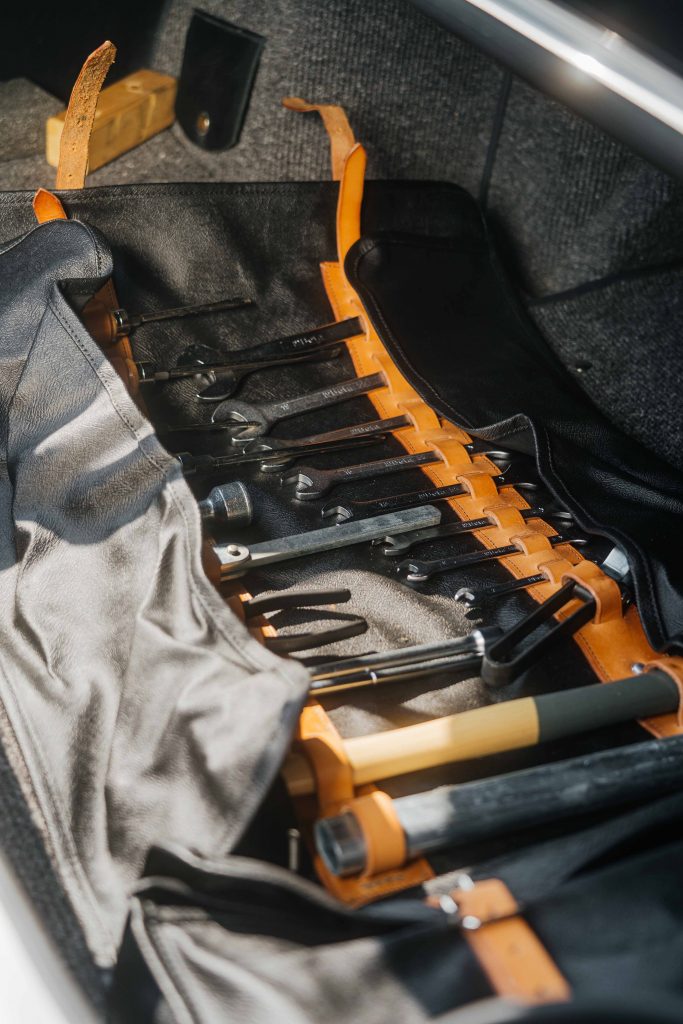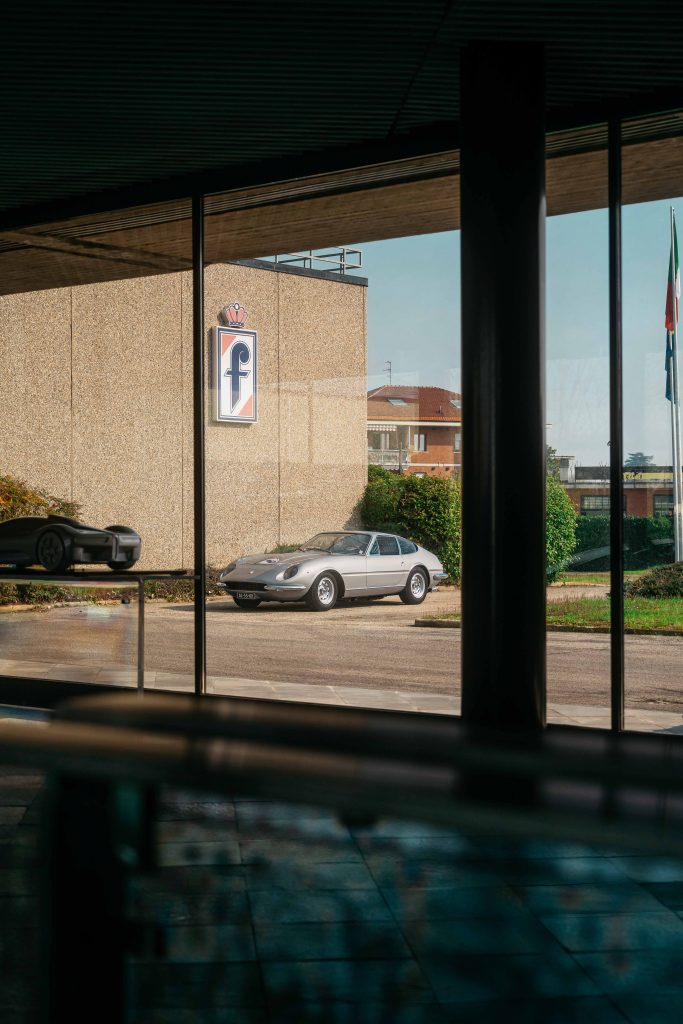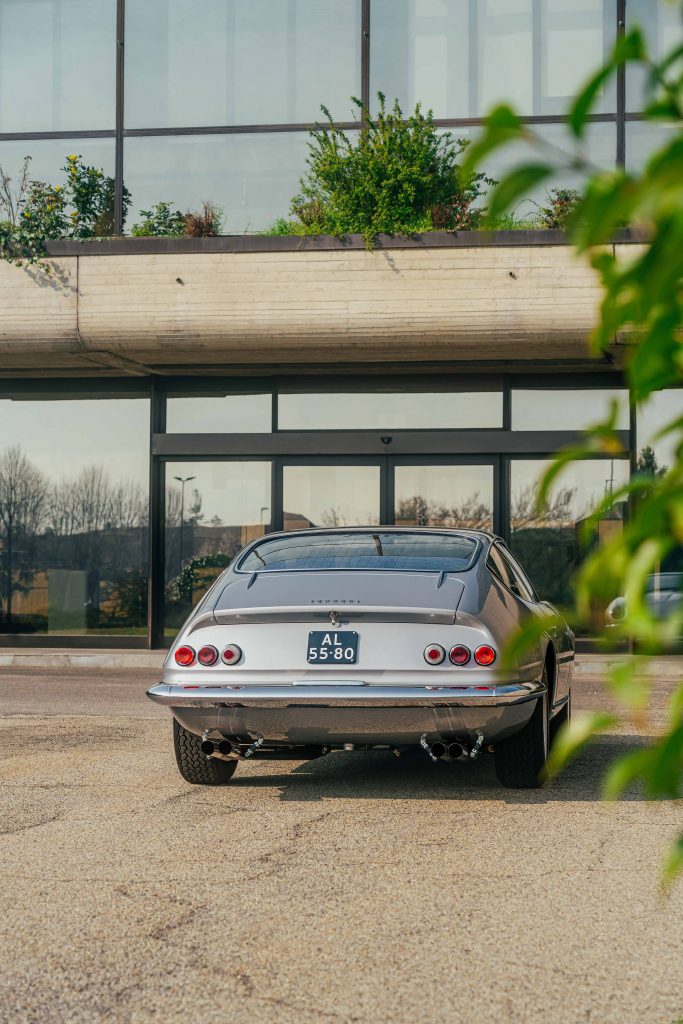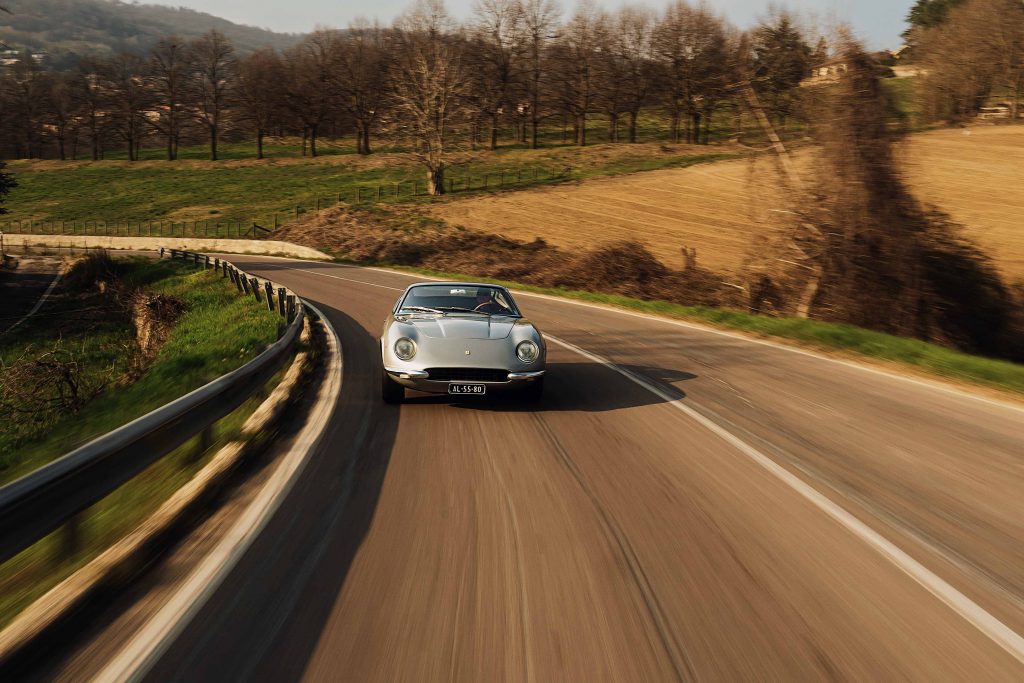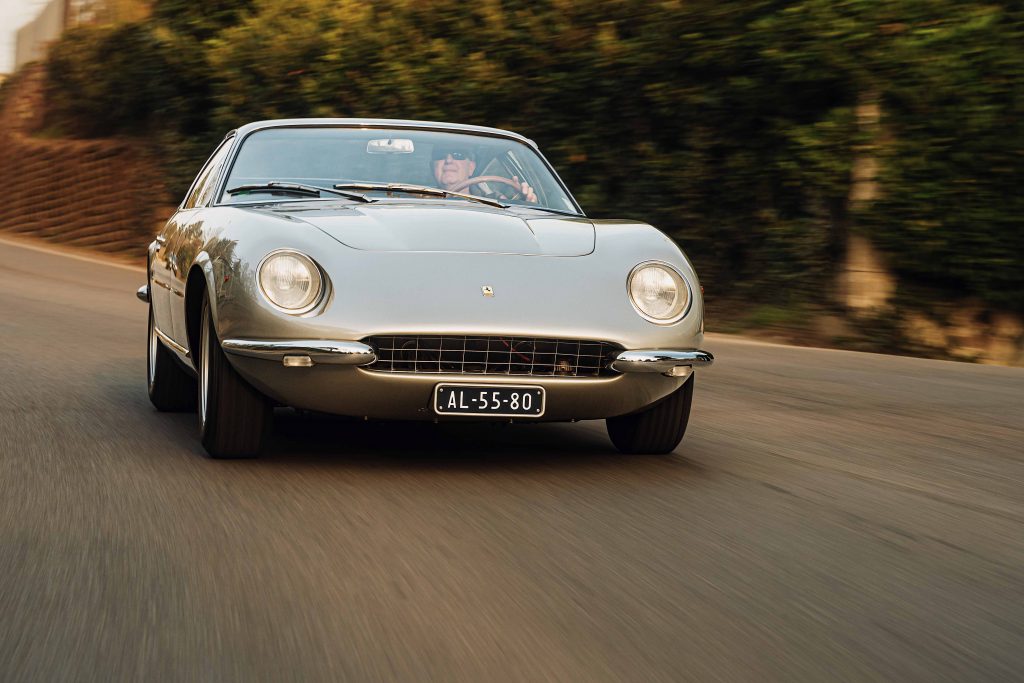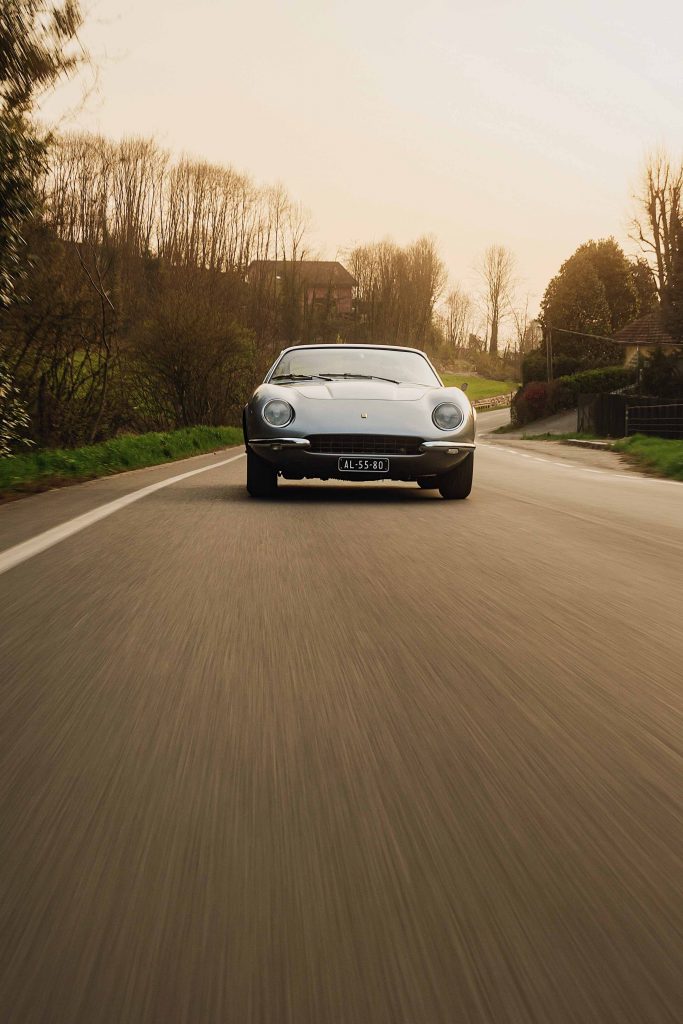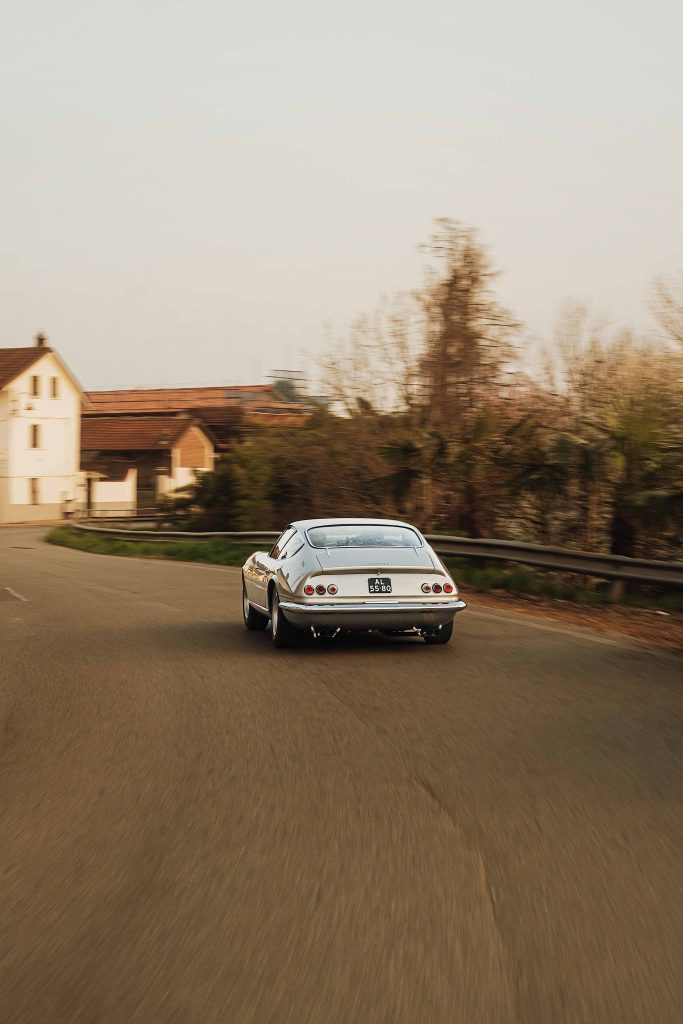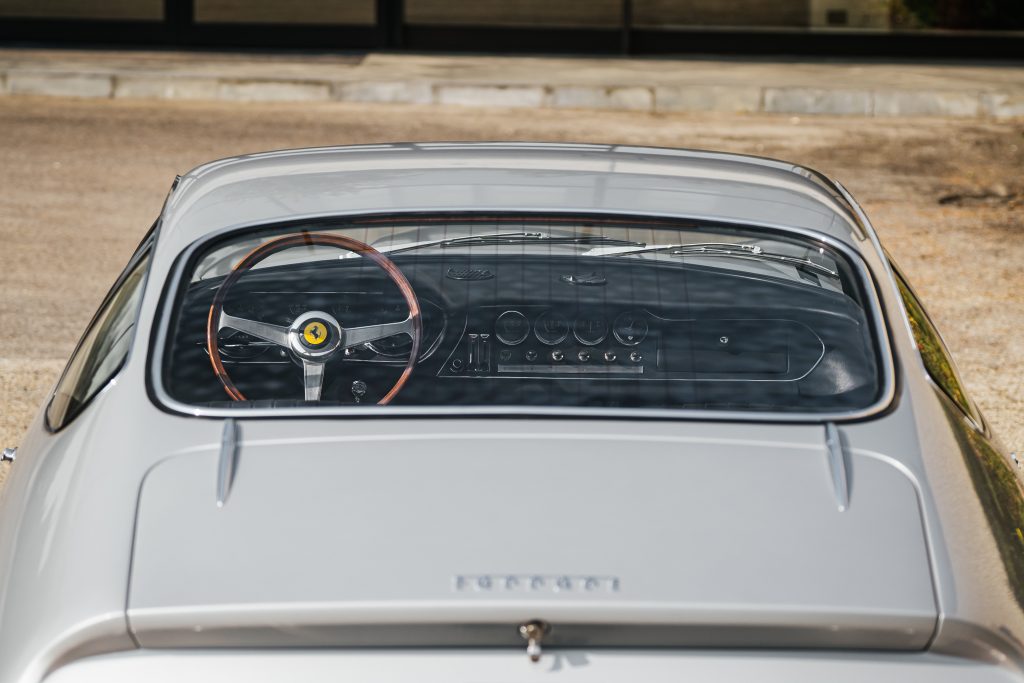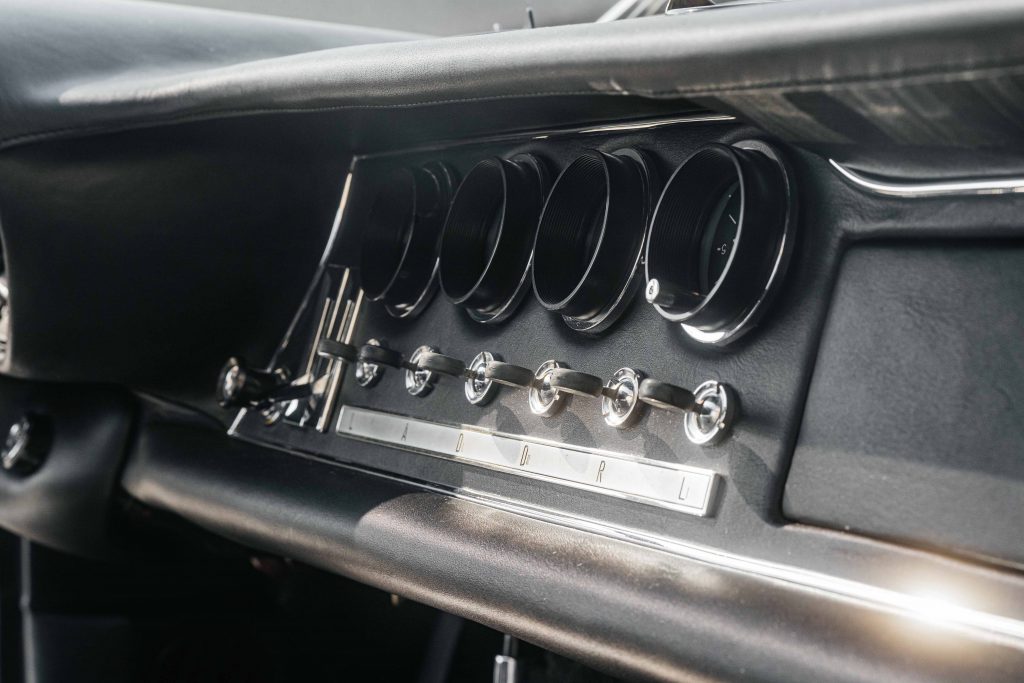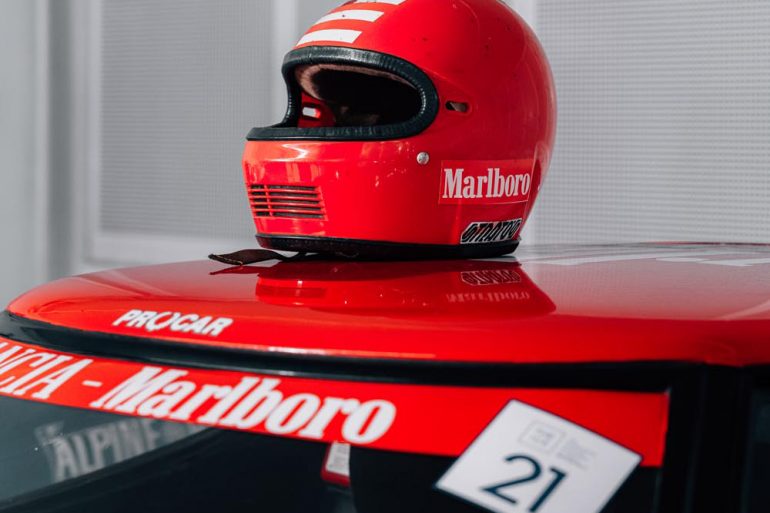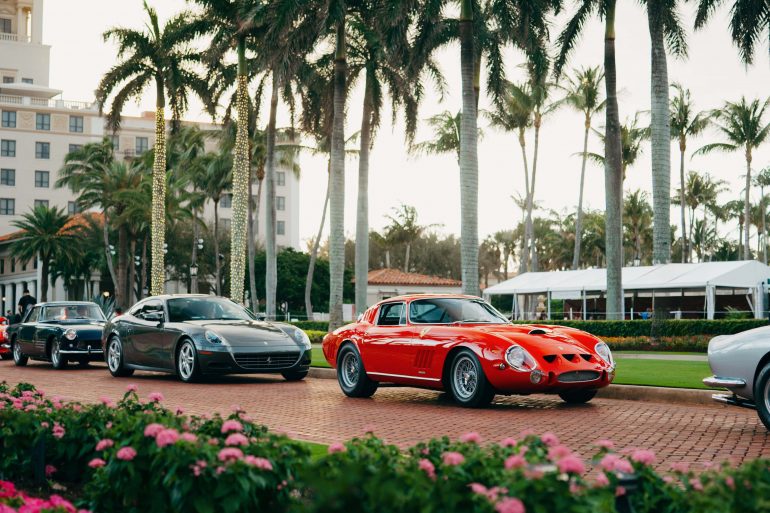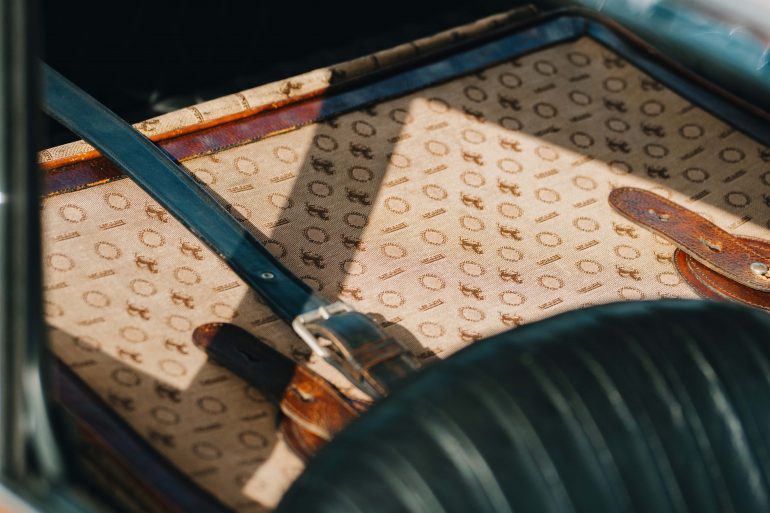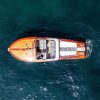In the late 1960s, it seemed as if the performance car world was at a crossroads. With the introduction of Lamborghini’s P400 Miura and its revolutionary mid-engined design, some thought this design would be the future for the upper echelons of performance cars, and that front-engined cars would begin to fade from popularity.
Spurred on by the success of the Miura, Ferrari knew that the replacement of the 275 GTB/4 needed to be something spectacular and new in order to take the fight to Lamborghini. Rather than move to a mid-engined format, it was decided that the front-engined V-12 platform would remain, alongside coachwork penned by Pininfarina. Quite simply, if it works for you and your clients, why go about reinventing the wheel? After all, this is what Ferrari had built their reputation on, and there was no one better at building twelve-cylinder, front-engined GT cars than Ferrari. They were not to be outdone by this team of renegades at Lamborghini, headquartered just down the road from Maranello.
This very car was the genesis of that new model of Ferraris and the Scuderia’s fighting back against the Lamborghini and the Miura. At first glance to the casual observer, the car offered here seems to tread the line between a 275 GTB/4 and a 365 GTB/4 Daytona. Visual cues to both can be seen and some design elements seem to have blended together, but this car is far more than a design study penned by Leonardo Fioravanti to determine Ferrari’s future. A total of six 365 GTB/4 prototypes would be built, but this example, as the first, remains the most recognizable, the most unique, the most significant, and is undoubtedly the most desirable.
Chassis number 10287 is that of a Tipo 596 chassis, the same type which was used for the 275 GTB/4, made of tubular steel and a wheelbase measuring 2,400 mm (a wheelbase length shared by both 275 GTB/4 and 365 GTB/4). At its heart is a completely unique Colombo engine, one that would not be seen in any other Ferrari road car at the time. Designated Tipo 243 internally, it is fitted with dry sump, three-valve heads rather than the usual four valves per cylinder, dual ignition, twin spark plugs per cylinder, and is topped with six Weber 40 DCN18 carburetors. The block itself is based on that of a 330 GT but has been bored out to 4,380 cc. What is worth noting about this completely unique and radically redesigned engine is that it bears similarities to the engines found in the 330 P4 prototype racers, the car that won numerous races and earned its place in the history books after their memorable 1-2 finish with a 412 P coming in third at the 1967 24 Hours of Daytona. These cars also have double inlet valves with one exhaust valve per cylinder.
This very car was the genesis of that new model of Ferraris and the Scuderia’s fighting back against the Lamborghini and the Miura. At first glance to the casual observer, the car offered here seems to tread the line between a 275 GTB/4 and a 365 GTB/4 Daytona. Visual cues to both can be seen and some design elements seem to have blended together, but this car is far more than a design study to determine Ferrari’s future. A total of six 365 GTB/4 prototypes would be built, but this example, as the first, remains the most recognizable, the most unique, the most significant, and is undoubtedly the most desirable.
Chassis number 10287 is that of a Tipo 596 chassis, the same type which was used for the 275 GTB/4, made of tubular steel and a wheelbase measuring 2,400 mm (a wheelbase length shared by both 275 GTB/4 and 365 GTB/4). At its heart is a completely unique Colombo engine, one that would not be seen in any other Ferrari road car at the time. Designated Tipo 243 internally, it is fitted with dry sump, three-valve heads rather than the usual four valves per cylinder, dual ignition, twin spark plugs per cylinder, and is topped with six Weber 40 DCN18 carburetors. The block itself is based on that of a 330 GT but has been bored out to 4,380 cc. What is worth noting about this completely unique and radically redesigned engine is that it bears similarities to the engines found in the 330 P4 prototype racers, the car that won numerous races and earned its place in the history books after their memorable 1-2 finish with a 412 P coming in third at the 1967 24 Hours of Daytona. These cars also have double inlet valves with one exhaust valve per cylinder.
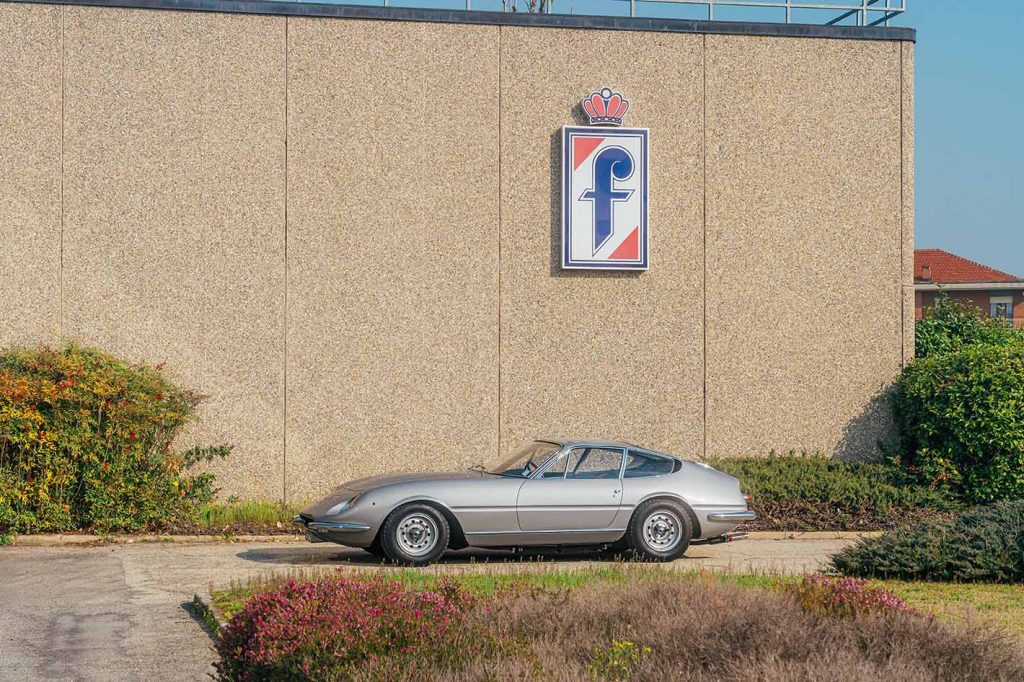
Chassis number 10287’s life outside of Ferrari began with Count Vincenzo Balestrieri, a Roman industrialist who found fame through his sporting exploits, especially offshore powerboat racing, winning the offshore powerboat racing world championships in 1968 and 1970, both around the time he would have owned chassis number 10287. He was the first non-American to win the world championship and also the first driver to win four consecutive races, achieving five speed records during this time. According to recollections from his son, Balestrieri had ordered a new 365 GTB/4 but before taking delivery, he found out through conversations with Enzo Ferrari that a spider version of the 365 GTB/4 was coming, which he much preferred. Rather than take delivery of his Daytona coupe, Enzo loaned him chassis number 10287 to enjoy while waiting for his Daytona Spider, and the prototype was traded back to Ferrari when the Daytona Spider arrived. All this is recorded in a feature article on the car in Cavallino 211.
The car’s report from Marcel Massini shows that the car’s first private owner was FIMA S.p.A in Rome, and that the next owner was Ganpaolo Salgarella of Bologna, who purchased the car from FIMA S.p.A in 1972. The car did not remain with Salgarella for long and was exported from Italy to the United States in May of that same year. The car passed through a handful of owners in the Southern United States before being purchased by Victor N. Goulet of Chicago, Illinois, in 1978. Later that year, the car was shown by Goulet at a Ferrari Club of America Central States event at Blackhawk Farms Raceway. Goulet moved to Southern California and took the Daytona with him. It was finally sold by Goulet in 1989 and returned to Europe under the ownership of a Dutch citizen who elected to keep the car in Switzerland. The car was later sold to an Italian car dealer living in Switzerland. With him, the car was shown at several events, including the Grand Prix of Dionne-les-Bains in France in May 1993 and Ferrari Suisse’s 20th-Anniversary Meeting in St. Moritz.
In September 2003, the Daytona prototype was acquired by the father of the current owner and returned to the Netherlands. A quote from him included in Cavallino 211 neatly summarizes the car’s condition and his mentality at the time: “I came across this car in Switzerland. It was in a pretty sad state, but I managed to get it running and took part in a Ferrari Club Meeting in 2003. ‘Do you have any idea what this car is,’ some of the older club members asked me. ‘Well, it is something that needs an awful lot of work,’ I replied. But slowly I found out that it really was a very special car, and I became desperate to find out all of its history.”
Fascinated by 10287’s significant role within Ferrari, the owner decided that it should be fully restored and returned to its former glory. Great care was taken in researching and returning the car to exactly as it was when it left the factory. For this work, the car was entrusted to a team of trusted specialists in the Netherlands with tremendous amounts of experience in Ferraris of this era. Alex Jansen of Forza Service was entrusted with the mechanical work. Bodywork was carried out by Carrosseriebedrijf Bart Romijnders, and interior work was left to HVL Exclusive Italian Interiors and Class Leathers.
Upon completion of 10287’s restoration, the car’s first showing was at the Villa d’Este Concorso d’Eleganza in May 2012. Once it returned to the public eye following the restoration, it received a tremendous amount of attention from aficionados and the motoring press alike, resulting in several feature articles in leading magazines, including issue 3 of the Dutch publication GTO by Autoweek, issue 303 in September 2014 of Rétro Viseur in France, its aforementioned article in Cavallino 211 in February/March 2016, AutoWeek Classics in the Netherlands in July 2016, and issue 23 of Octane Netherlands in August 2016.
Perhaps the final and most important step of the restoration was having the prototype Classiche certified. This proved to be an exciting and fascinating process as, during this time period, photographs of chassis number 10287 were found, showing that it had six small Carello taillights rather than the usual four seen on 365 GTB/4s. Through further research, it was determined that the car had left Maranello equipped as such, and the rear end of the car was returned to its as-completed state. Issued with a certification binder immediately thereafter, this confirms that the car retains its original chassis, completely unique and original engine, and has been fitted with a replacement transaxle gearbox of the correct type.
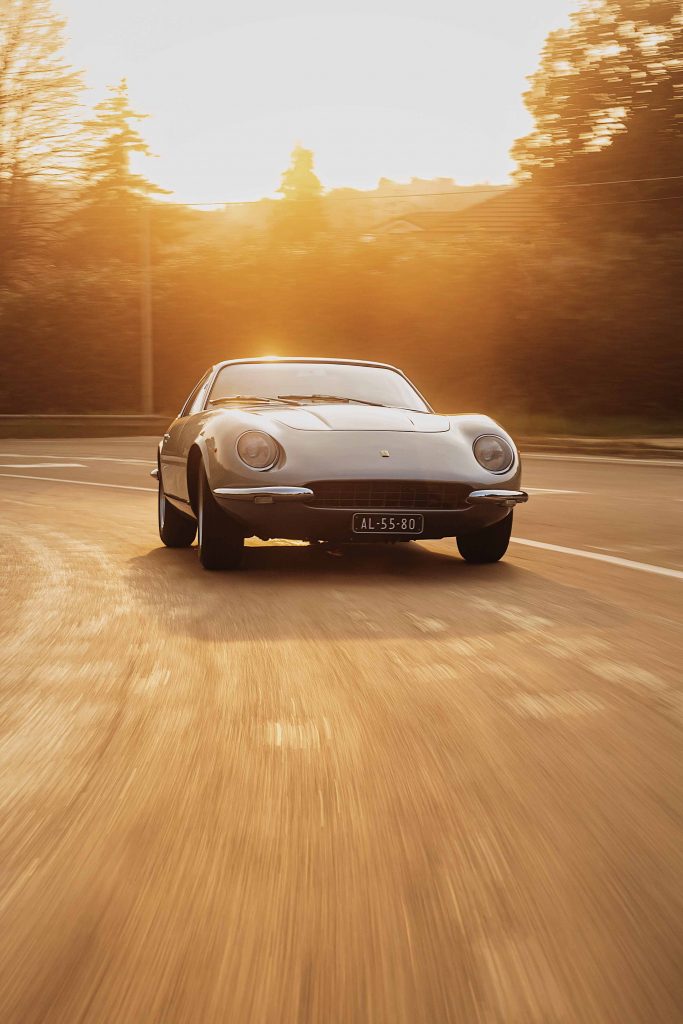
After this work was completed, the car was placed on display in the Museo Ferrari from February 2015 to March 2016, a great honor for a highly significant car. Undoubtedly, its crowning concours achievement came later that year when it was awarded Best of Show honors at the Concours d’Elegance Paleis Het Loo Apeldoorn in the Netherlands. The car was shown twice more following its best of show win; at the Zoute Concours d’Elegance in 2017 and at MECC Maastricht Interclassics at a special exhibition celebrating 70 years of Ferrari in the Netherlands.
Since then, the car has been well preserved and seldom seen since. Always looked after by Forza Service, who were responsible for the car’s engine and mechanical work during the restoration, it is said to run and drive beautifully, and was most recently serviced by them in March of this year. About 1,000 km have been driven since the completion of the restoration, ensuring that the car has been properly run in and can be enjoyed at speed on the open road, with performance to match its best of show honors. Accompanying the car is a toolkit with jack, its history file including photographs from the restoration, Classiche binder, certificate from Museo Ferrari, its previous California number plates and reproduction Roma plates, and a handful of awards from Zoute and Paleis Het Loo.
Chassis number 10287 sits precisely in the middle of two of Ferrari’s most significant models; the 275 GTB/4 and the 365 GTB/4. Mechanically and aesthetically, it remains unique yet instantly recognizable as the transition between the two models. Combining a one-off powerplant and styling that echoes elements of both the standard production 275 GTB/4 and 365 GTB/4, it offers the very best of both cars with its own fascinating story to tell. Shown at only a handful of select events since the completion of its restoration, it would surely be welcomed with open arms at a number of the world’s most celebrated events due to its fascinating place in Ferrari history. Chassis number 10287’s significance simply cannot be understated, and it would be a highlight of any Ferrari collection worldwide.



